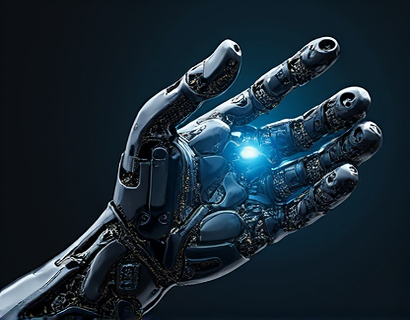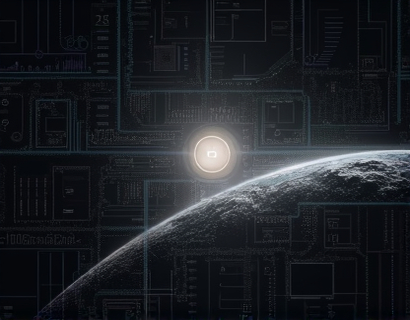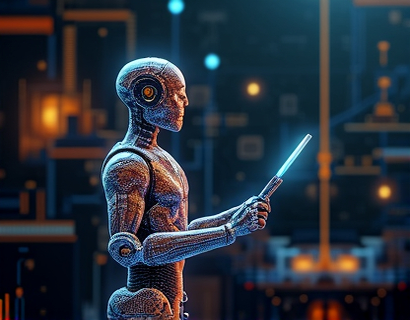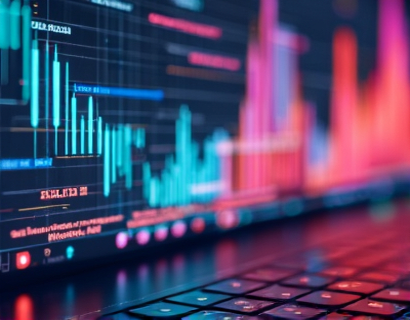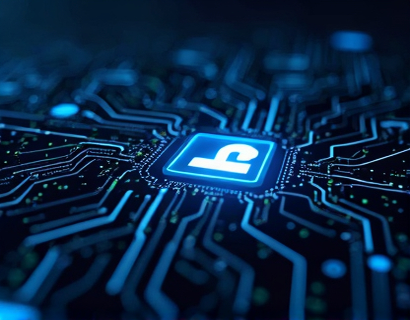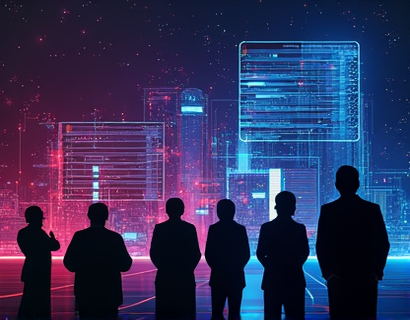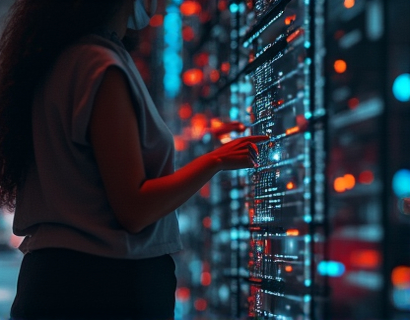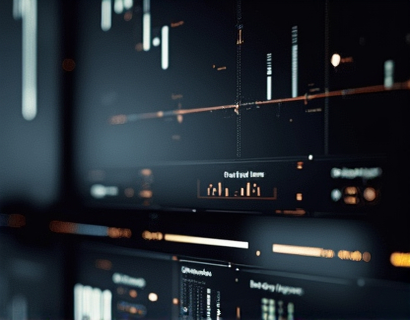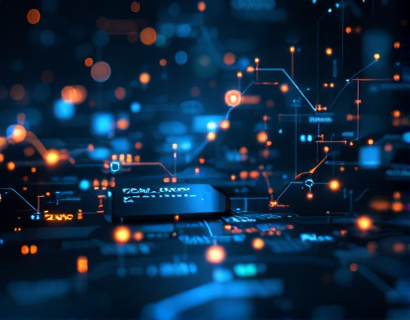Unlocking Digital Growth: Leveraging Crypto and AI for Next-Gen Ecosystem Solutions
The digital landscape is rapidly evolving, driven by technological advancements in blockchain and artificial intelligence. These two revolutionary technologies, when combined, offer unprecedented opportunities for enhancing app and service interactions. This article delves into the transformative potential of integrating crypto and AI to create next-generation ecosystem solutions, providing a comprehensive guide for tech innovators and early adopters aiming to drive growth and engagement in the digital realm.
The intersection of blockchain and AI is a fertile ground for innovation, offering solutions that were once considered futuristic. By harnessing the decentralized, secure, and transparent nature of blockchain, coupled with the intelligent and adaptive capabilities of AI, businesses can create more robust, efficient, and user-centric digital experiences. This synergy not only enhances the functionality of apps and services but also fosters trust and security, critical components in the digital age.
Understanding Blockchain and AI
To fully leverage the potential of blockchain and AI, it's essential to understand the fundamentals of each technology.
Blockchain is a distributed ledger technology that records transactions across multiple computers in a way that ensures security, transparency, and immutability. Each block in the chain contains a cryptographic hash of the previous block, a timestamp, and transaction data. This structure makes it nearly impossible to alter any information without detection, providing a high level of security and trust.
Artificial Intelligence, on the other hand, encompasses a range of technologies that enable machines to perform tasks that traditionally required human intelligence. These tasks include learning from data, recognizing patterns, making decisions, and even performing natural language processing. AI can be categorized into several subsets, including machine learning, deep learning, and natural language processing, each with its unique applications and capabilities.
The combination of blockchain and AI creates a powerful toolset for building resilient and intelligent systems. Blockchain provides the infrastructure for secure and transparent data management, while AI brings the intelligence to analyze and act on this data in meaningful ways.
Enhancing App Interactions with AI
AI can significantly enhance app interactions by personalizing user experiences, automating processes, and providing intelligent insights. Here are some key ways AI can transform app functionality:
- Personalization: AI algorithms can analyze user behavior and preferences to deliver personalized content, recommendations, and experiences. This not only improves user satisfaction but also increases engagement and retention.
- Chatbots and Virtual Assistants: AI-powered chatbots can provide 24/7 customer support, answering queries, and guiding users through app functionalities. Virtual assistants can perform complex tasks, from scheduling appointments to managing smart home devices, enhancing the overall user experience.
- Predictive Analytics: By analyzing historical data, AI can predict user behavior and trends, enabling apps to proactively offer solutions and services. This predictive capability can lead to more efficient resource allocation and better decision-making.
- Fraud Detection: AI algorithms can detect anomalies and suspicious activities in real-time, enhancing the security of apps and protecting user data.
These AI-driven features not only improve the user experience but also provide valuable insights that can inform business strategies and operations.
Securing App Ecosystems with Blockchain
Blockchain technology plays a crucial role in securing app ecosystems by ensuring data integrity, enhancing privacy, and reducing fraud. Here’s how blockchain can be leveraged:
- Data Integrity: The immutable nature of blockchain ensures that once data is recorded, it cannot be altered. This is particularly important for apps that handle sensitive information, such as financial transactions or personal data.
- Decentralized Identity Management: Blockchain can provide a decentralized approach to identity verification, reducing reliance on centralized authorities and enhancing user control over personal data.
- Smart Contracts: Smart contracts on the blockchain can automate and enforce agreements between parties, reducing the need for intermediaries and minimizing the risk of fraud.
- Supply Chain Transparency: For apps involved in supply chain management, blockchain can offer real-time tracking and verification of products, ensuring authenticity and reducing counterfeiting.
By integrating blockchain, apps can build trust with users, ensuring that their data and transactions are secure and transparent.
Synergizing Blockchain and AI
The true power of combining blockchain and AI lies in their synergistic capabilities. Here are some scenarios where these technologies work together to create innovative solutions:
1. Decentralized AI Marketplaces: Blockchain can facilitate a decentralized marketplace for AI models and data, allowing developers to buy, sell, and trade AI assets securely. AI algorithms can be used to match suppliers and buyers based on compatibility and reputation, creating a robust and dynamic ecosystem.
2. Trustworthy Data Sharing: AI models often require large datasets to function effectively. Blockchain can enable secure and privacy-preserving data sharing, ensuring that data providers are compensated fairly while maintaining control over their data. AI can then process this data to provide valuable insights and predictions.
3. Autonomous Systems: Combining blockchain and AI can lead to the development of autonomous systems that operate with minimal human intervention. For example, smart cities can use AI to manage traffic, energy, and public services, with blockchain ensuring secure and transparent data exchanges between different systems.
4. Enhanced Security for AI Models: AI models can be vulnerable to attacks and biases. Blockchain can provide a secure framework for storing and verifying AI models, ensuring their integrity and authenticity. This can be particularly important in critical applications such as healthcare and finance.
Building a Next-Gen Ecosystem with Crypto and AI
To build a next-generation ecosystem that leverages the strengths of both blockchain and AI, consider the following strategies:
1. Define Clear Objectives: Clearly define the goals and use cases for integrating blockchain and AI. Whether it's enhancing user experience, securing data, or creating new revenue streams, having a clear vision will guide the development process.
2. Choose the Right Technologies: Select blockchain platforms and AI frameworks that align with your objectives. Consider factors such as scalability, security, and community support when making these choices.
3. Develop a Robust Architecture: Design a system architecture that seamlessly integrates blockchain and AI components. Ensure that data flows efficiently between the two, and that security measures are in place to protect against potential threats.
4. Focus on User Experience: While technical capabilities are crucial, the user experience should remain the top priority. Use AI to personalize and simplify interactions, and ensure that blockchain-based features enhance rather than complicate the user journey.
5. Foster a Community: Building a strong community around your ecosystem can drive adoption and innovation. Encourage developers and users to contribute to the ecosystem, share insights, and collaborate on new projects.
6. Stay Compliant and Ethical: Navigate the regulatory landscape carefully, ensuring that your use of blockchain and AI complies with relevant laws and ethical standards. Transparency and accountability are key to building trust with users.
Case Studies and Real-World Applications
Several projects and platforms are already demonstrating the potential of combining blockchain and AI. Here are a few notable examples:
1. Decentralized Finance (DeFi): Platforms like Uniswap and Aave use blockchain to create decentralized financial services, with AI enhancing trading algorithms and risk management systems.
2. Supply Chain Management: Companies like IBM and Maersk have developed blockchain-based platforms for supply chain tracking, with AI analytics to optimize logistics and reduce costs.
3. Healthcare: Initiatives like Medibloc use blockchain to secure patient data, with AI tools for predictive analytics and personalized medicine.
These examples showcase how the integration of blockchain and AI can lead to innovative solutions that address real-world challenges and create value for users.
Challenges and Considerations
While the potential is vast, there are several challenges and considerations to keep in mind when leveraging blockchain and AI:
1. Technical Complexity: Integrating blockchain and AI requires a high level of technical expertise. Organizations may need to invest in training or hire specialists to navigate the complexities.
2. Scalability: Both blockchain and AI can face scalability issues, particularly when dealing with large volumes of data or high transaction rates. Solutions like sharding and layer 2 protocols can help address these challenges.
3. Regulatory Uncertainty: The regulatory landscape for blockchain and AI is still evolving. Staying informed and compliant with local and international regulations is crucial to avoid legal issues.
4. Energy Consumption: Blockchain, especially proof-of-work systems, can be energy-intensive. Exploring more sustainable consensus mechanisms and AI models can help mitigate this concern.
5. Data Privacy: While blockchain enhances transparency, it's essential to balance this with user privacy. Implementing privacy-preserving techniques such as zero-knowledge proofs can help protect sensitive information.
Conclusion
The convergence of blockchain and AI represents a significant leap forward in digital technology, offering transformative potential for app and service interactions. By embracing these technologies, tech innovators and early adopters can unlock new opportunities for growth, engagement, and innovation. As the ecosystem continues to evolve, staying informed, adaptable, and user-centric will be key to success in the digital landscape.




